Sam. - Historical reenactor, a (royal) blue coat and a red coat. 🇬🇧 Old sailing ship and generally boat enthusiast. ⛵ Recently been making a ton of new old things.
Don't wanna be here? Send us removal request.
Text
Happy Valentine's Day!
Have some terribly punny cards from the USS Constitution Museum.



51 notes
·
View notes
Note
When is the last time you were on a boat (or ship if we're getting technical about names)?
Ooh fun! The last ship I actually stepped foot on was USS Constitution last October. I'm currently trying to apply as intern at the museum... which isn't going great :/ (they don't have availability for that).
BUT!!!! I literally just got a job this week to work May-August on a schooner in Lake Huron!

20 notes
·
View notes
Text
Being a trans person in historical reenacting has been such an oddly gender euphoric experience.
So I'm genderfluid, and when I'm in a ftm vibe (which is most frequent honestly), in daily life I'm still perceived as "woman." But when I'm dressed as a male soldier in the 1770s British military, this happens very infrequently. In fact, I'm correctly gendered by folks (e.g. old cis white men) who normally wouldn't be so kind to trans men like me. My heart swells and I can't stop smiling every time a boomer calls me "he" or even corrects himself without my prompting. My shoulders are broad enough and 18th century fashion tailored enough that I truly match my comrades. I cut my hair short, which is less accurate to the period, but I've gotten more folks immediately see me as male. One soldier asked if I was my sergeant's son and neither of us corrected him. We're not related btw. I'll never forget my colonel at Fort Ti catching himself at "She--" or the way I now have learned my name, Samuel, and respond well to it and unlearned my deadname. I have an excuse for my transphobic parents to see me called by my male name. I have an excuse to buy trans tape (I can't even articulate how much binding tape has saved me--reenacting is intense exercise and therefore a binder isn't healthy) and deepen my voice to sing or yell HUZZA and use makeup to simulate facial hair (NOT for 1700s though).
Even so, some members of the audience demand to know "why I'm a girl." How can I, a person born with "F" on my birth certificate, dare dress as a male and carry a musket? What do I know about history, being a "woman?" And I tell them about Hannah Snell, Deborah Sampson, Mary Lacey, Mary Ann Talbot, Phoebe Hessel, Johanna Sophia Kettner, Anna Maria Lane, Ana María de Soto, Jeanette Colin, and many more. And while these people cannot be labelled "queer" or "trans," I wonder if they felt the way I feel. At least, in the context of my existence, I can speak about theirs. Yet still, even men I consider friends, doubt this reality. Yes, he's right to say Sybil Ludington and Molly Pitcher and Lucy Brewer are likely fiction, but even so, reality inspires fiction. Hannah Snell was very much real and very much did serve in the army and later the marines. Why is that history so hard to believe? Why does my existence demand an explanation?
And yet reenacting is my gender euphoria.
#history#reenacting#american revolution#gender#lgbtqia#trans#it's late and im tired and i needed to say this i think#reenacting is my escape from reality 100%#and so with that comes a lot of unexpected acceptance#and also the usual transphobic comments or implications#but less so
13 notes
·
View notes
Photo
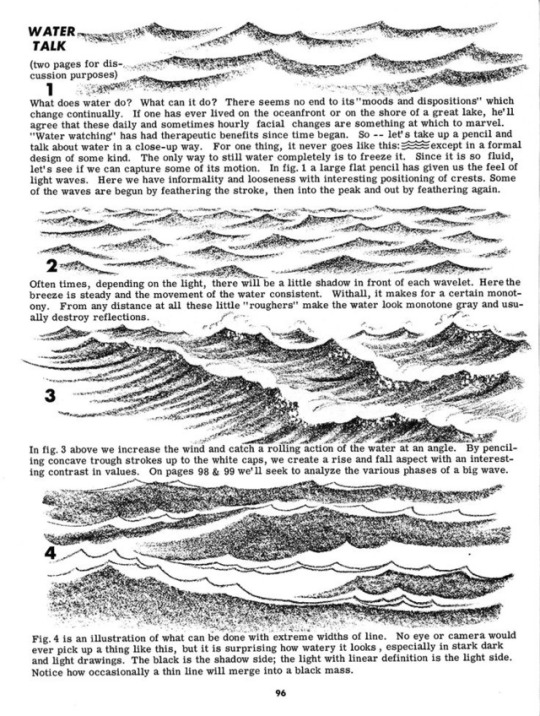
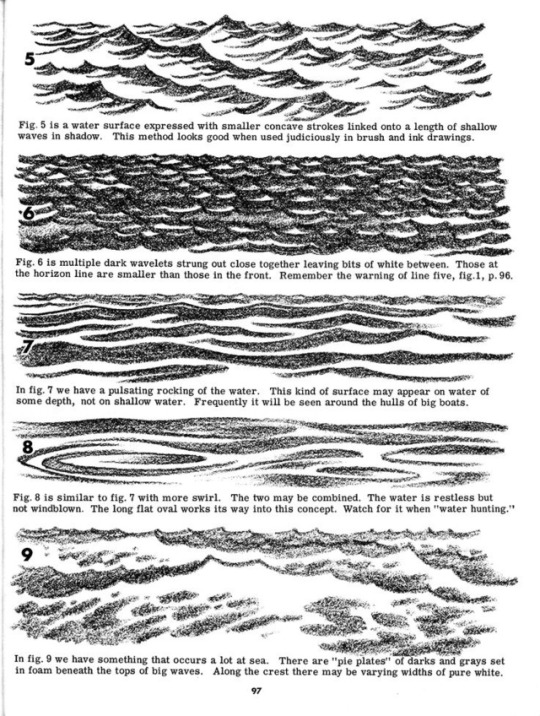
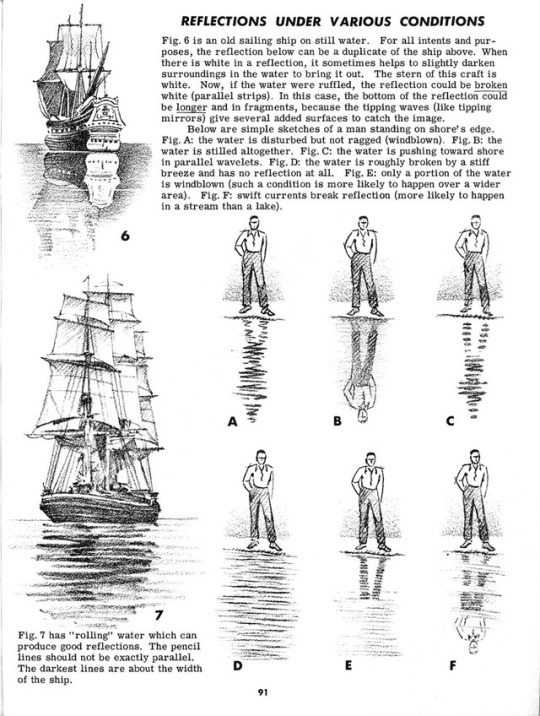
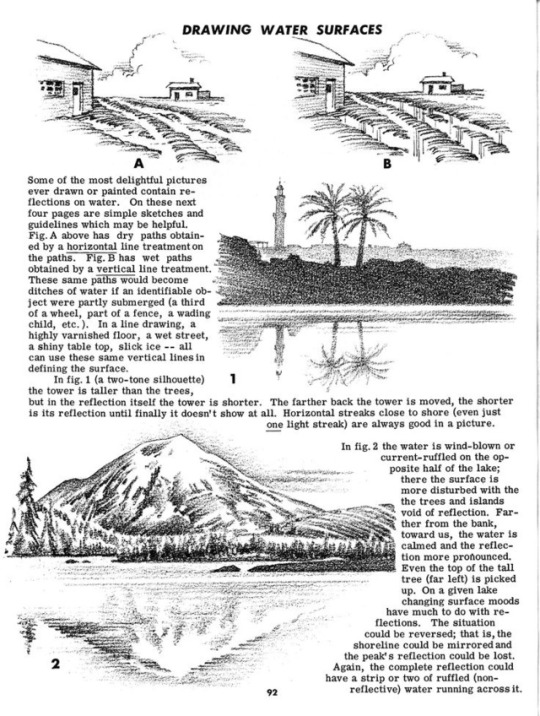

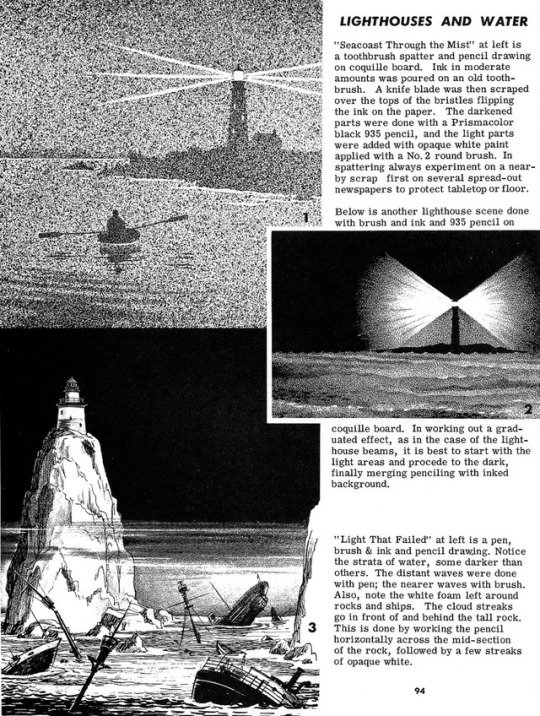


How to draw water surfaces. From Jack Hamm’s Drawing Scenery (1972).
7K notes
·
View notes
Text
Thank you--I have to say you have some good taste in music! I won't list the same songs, but I'll share some by some similar singers. ;)
The Men Behind the Guns - Phil Ochs
Down the Road - Stan Rogers
The Parting Glass - The High Kings
Dear Fellow Traveller - Sea Wolf
The Girl I Left Behind Me - threelegsoman
Anyone feel free to add to this and I'll offer it with some tags-- @acrossthewavesoftime @chiropteracupola @goldandnavy @a-french-guardsman
five songs
tagged by @napoleonsloveletter—thank you!
roma fade - andrew bird
cartographer - gawain and the green knight
capriol suite mvt. 2: pavane - peter warlock
the witch of the westmorland - stan rogers
here's a health to the company - specifically this version by the longest johns lol
no-pressure tagging @some-cold-and-some-violence @clove-pinks @ceresprime @swingindoorsusan @robespeeair if you so wish to participate :)
39 notes
·
View notes
Note
Haha this is great! Of course, some context is earned, this sticker is something my statistics teacher handed to me (the well-known history nerd) and now graces my notebook of course.
Thanks for the stories!

Oh, look what we have here! Carl Friedrich Gauß keeping it cool in his Thug Life glasses! Thank you for sending him to me, I do have to say that I am quite partial to putting ye olde glasses on historical figures.
It looks like ths Gauß is a sticker and has been put to good use safeguarding a notebook or similar item employ'd by its owner in the pursuit of similar mathematical greatness? If this be so, I hope that Gauß's genius will guide you through the rough tides of exams and homework!
Do you have a special liking for, or interest in Gauß and his work from a mathematical, or historical perspective? Personally, I was not aware of the fact that two of his sons emigrated to the US and became wealthy businessmen, with the first brother leaving for America following a fallout with his father.
More inclined towards the ancient and modern languages, art, history and the belles lettres, I was never one captivated by the study of maths and physics throughout my secondary school career, until, flipping, bored, through my physics textbook in class one late afternoon entrapped in the classroom for the last lesson of the day, I discovered the image of a beribboned and bewigged beau-- and this is how I discovered my interest in early modern history thanks to Christiaan Huygens smiling at me. I don't think that the aim of my textbook was to help me discover my partiality towards men in wigs, lace and ribbons, but here we are.
...Little did I know then that one day, I would struggle through a diary written in 17th century Dutch, by Huygens's brother Constantijn, in order to find of which one of their nieces was responsible for making a King of England giggle during a church service:

Entry for 8 April 1695, Constantijn Huygens Jr., Journaal van 21 october 1688 tot 2 september 1696. Tweede deel (ed. 1877), digitally available at the digitale bibliotheek vor de Nederlandse letteren.
So far, I was unable to track down the name of the young woman; I guess I'll have to--
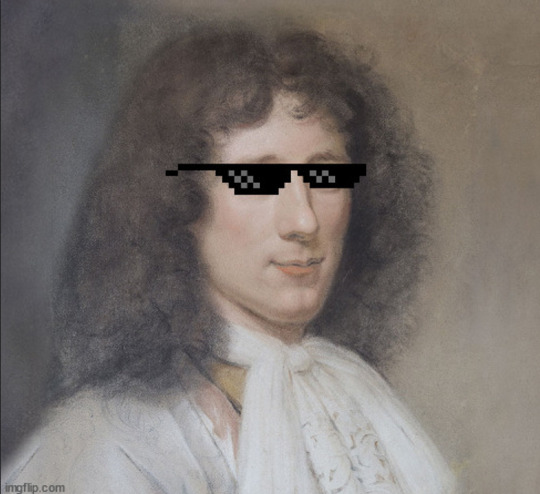
(Thanks, Christiaan.)
12 notes
·
View notes
Text
Happy Valentine's Day

8 notes
·
View notes
Photo
A huzzay spotted in the wild!
Yes, it was pronounced with a long "a" sound to rhyme in this poem with "away"! Check out this in-depth article on the topic:

Weighing Anchor, by William Kohler early 19th century
Come my boys, your handspikes poise,
And give one general huzza, yet sighing as you pull away.
For the tears ashore that flow, to the windlass let us go.
With yo heave ho !
113 notes
·
View notes
Text

Haha the vibes of a historical fiction reader are rare I guess.
I have a question
#kinda by genre but mostly by year it takes place#there's a fiction and a non fiction shelf#then they're organized by year from there#history#historical fiction#books#reading
20K notes
·
View notes
Note
BTW there was the 1986 STV version and a later color version in 1976 by the BBC.
Where, please tell me where, did you get a copy of the "Flight of the Heron" on video to make this vid!? I MUST have. (Having accidentally dropped into the fandom about 10 days ago and read the entire book pretty much in one *really*long* sitting.)
Hello!
I've actively been avoiding this ask because I was too lazy to do the research to see if I could post the videos for you.
Alas, I cannot.
I bought the DVD set online! It was hard to find though, I think it was @sanguinarysanguinity that gave me the link to purchase it.
The fan vid in question: https://www.youtube.com/watch?v=aKO_f5bR7s4
According to the copyright laws of film, 70 needs to have passed since the director's death. It's only been 55 years and I'm not sure if Brian Mahoney is still alive but it's definitely not been 70 years.
Source: https://www.gov.uk/government/publications/copyright-notice-duration-of-copyright-term/copyright-notice-duration-of-copyright-term
Sooooo... Check back in 20 years or so and I might post it then if it's in the public domain by then, lol.
6 notes
·
View notes
Note
Where, please tell me where, did you get a copy of the "Flight of the Heron" on video to make this vid!? I MUST have. (Having accidentally dropped into the fandom about 10 days ago and read the entire book pretty much in one *really*long* sitting.)
Hello!
I've actively been avoiding this ask because I was too lazy to do the research to see if I could post the videos for you.
Alas, I cannot.
I bought the DVD set online! It was hard to find though, I think it was @sanguinarysanguinity that gave me the link to purchase it.
The fan vid in question: https://www.youtube.com/watch?v=aKO_f5bR7s4
According to the copyright laws of film, 70 needs to have passed since the director's death. It's only been 55 years and I'm not sure if Brian Mahoney is still alive but it's definitely not been 70 years.
Source: https://www.gov.uk/government/publications/copyright-notice-duration-of-copyright-term/copyright-notice-duration-of-copyright-term
Sooooo... Check back in 20 years or so and I might post it then if it's in the public domain by then, lol.
6 notes
·
View notes
Note
Reenactor here - Butlers Ranger
I'm here if u need help with any American Loyalist info!
I'm about to make my own Tarletons British Legion Unit!
If u need anything i'm here to help!
Sounds very cool! Want to share some of the most interesting highlights you've got? What events are you going to this year?
N.B. why is your URL "thelocalredcoat"when you're a loyalist? What about your green coat?
4 notes
·
View notes
Note
This is fantastic! Thank you so much for the thoughtful response!
Hi,
As a reenactor who fires muskets on historic battlefields, I joke when I lose a pewter button marked "4" that future archaeologists would be so confused because the 4th Regiment of Foot was never there during the American War of Independence.
Although this is a joke, I would like to know a little about how archaeologists can tell replicas from the real thing, especially on objects like pewter or brass buttons and the like where carbon dating isn't an option (I don't think??)
Oooh, this is an awesome question! I'm going to answer by pretending that the fact that it's from a regiment that was never there wouldn't be a huge giveaway. It's also entirely possible that someone just digging it up could be fooled. (Although that's not to say that a button from a regiment that was never involved with a conflict has never ended up somewhere it shouldn't be. People trade things or make due with what they have, and that can lead to all sorts of interesting situations.)
The unscientific answer is an archaeological vibe check. The first step for analysis either in a lab or in the field is to determine what you do and don't know, and how those line up with processes of deposition and taphonomy. Essentially, does this button pass the vibe check for being old enough to be from the Revolutionary War? If it is old enough, was it deposited in during the course of the war or sometime after?
First component of the vibe check is stratigraphy. If you dropped your button, it's going to wind up on the top of the ground surface, which is probably at least several inches (if not several feet) above the 1700s ground surface. This is due to the law of superposition, and why archaeology requires so much digging. Even if you did manage to get your button all the way down there, we would be able to tell that the ground had been disturbed.
The second component of the vibe check would be wear marks. A button that's more than 200 years old will not have survived that long out in the elements unscathed. Your button, even if it sees some action (pun very much intended) is always going to be younger than an original.
There is also the matter of manufacturing. Unless your button is being made by some guy using the exact same materials and techniques that were in use in the 1700s, there will be minute differences that we can probably figure out in a lab setting.
-Reid
276 notes
·
View notes
Text
I just reblogged this resource the other day, a collection of historical research on music in Massachusetts in the colonial period.
As for music to casually listen to, I've got the beginning of a playlist for music a British redcoat of the 1770s might have memorized here.
Sea shanties are of course another sort of folk music from the period, which I've got a mix of time periods in this playlist.
I also have a playlist with mostly folk music that recounts a historical event from any time period, if that suits your fancy.
I’m suddenly in a TURN Soundtrack mood, which means I’ve been re-listening to all the TURN classics we know and love: “Spanish Ladies,” “Turpin Hero,” “Bonny Portmore,” “Katie Cruel,” “A Lyke Wake Dirge,” “Ten Thousand Miles/Turtle Dove,” etc. (Aside: I’m still mad that “Set It Right” wasn’t included on the Season 2 soundtrack.)
Since I’ve re-listened to everything, now I’m itching to find other similar American folk songs around the colonial period. I’m open to suggestions and/or recommendations. Thanks in advance!
23 notes
·
View notes
Note
Appearance
I can't believe I forgot to mention that boobs exist??
Of course, wearing a binder is the usual conclusion to this female-sex-male-gender situation, buuuuuut reenactments tend to last a whole weekend. Friday night to Sunday afternoon. Binders shouldn't be worn for much over 12 hours. It also gets pretty cold at night, here in New England, and changing out of a binder requires releasing that rare warmth. (Side note: tents are good and mudflaps allow more privacy.)
So, there are options! (not limited to what I've listed, but these give you a start!)
wear a binder but make sure to take it off after 12 hours: maybe plan on putting it on after breakfast and take it off around supper.
change into women's 18th century clothing after a battle and therefore not wear your binder too long.
wear a sports bra that flattens well enough without being too small. I've slept in these on cold nights and been comfortable.
wear trans binding tape, which is okay for up to 5 days.
just don't worry about it. For some, the layers and layers of wool and belting across your chest is enough to wear a normal bra and still look manly or simply you aren't going to sacrifice comfort for looks and that's okay, too!
Hello there!
I’m in the UK and apart of my county’s only regiment. Historically speaking. It’s rather funny but regardless - I was talking with the sergeant about joining up myself (having a ton of experience with Napoleonic drills and weaponry+combat, etc) and he said that sure, of course. There’s only one woman (she uses horse hair mutton chops and glues em, very cool imo) as one of the men and the sergeant mentioned that a lot of other HRA groups are very strict about having women join as enlisted soldiers. As I mentioned, we’re quite tiny and the only regiment in the county. Seems you do a lot more high scale type stuff, very well known wars and battles. Does that same rule apply over there? I’d imagine it to be quite strict, but I was just curious. Cheers!
Women in Reenacting
The rules here are sometimes just as strict--historical reenacting is a white male dominated hobby. Some organizations that coordinate separate groups still don't allow women to join the ranks as male soldiers (on paper at least). It really depends on the individual group and is often safest\* to join one with other women.
I find that if you do the work with the right people and do your homework (i.e. research the history of the people you portray, what they did and how they looked), you'll be just fine.
I'm glad you found a group that you can join, have fun!!
Appearance
Like you mentioned, you have to make sure you're portraying a man properly. I'm lucky to not have to worry about facial hair since generally men were cleanshaven in the American War of Independence, so I wish you luck with the mutton chops! Do your best to look more manly, even something as silly as tucking in your shirt more to the front of your pants, or manspreading rather than crossing your legs when you sit. I style my hair the same way as the men who wear wigs, in a late 18th century club. (I've been wanting to chop all of my hair off, but I'm refraining until after the 250th anniversary events to be most accurate.)
On the aspect of uniform, since you're portraying the Napoleonic Wars, you'll have a bit less gear but still quite a lot. (This might be TMI, bear with me.) I highly suggest planning bathroom breaks between formations/battles/etc so you can go without crossbelts, cap, or coat. As someone who's dunked their bayonet scabbard in the toilet, trust me, you'd rather have less gear to deal with.
I also tend to try lowering my voice when yelling "huzzay" during bayonet charges and the like. From a distance during a battle, the public generally can't tell male from female since you're all wearing the same uniform.
Social Things
When interacting with the public, be prepared for lots of condescending "well there weren't actually women soldiers, were there?" but also be prepared for the cute little girls who run up to you in a parking lot asking "is it okay that you're a girl? can I do that too?". I like to answer these questions the same way: play along with the scenario. I always react with surprise as if no one else can see that I'm a woman and tell them not to tell my officers. I like to pretend that I play the role of Hannah Snell or Deborah Sampson or (fictional) Louisa Baker, and use this as an opportunity to tell their stories. But don't forget to add something about women who portray women, i.e., camp followers being sutlers and soldiers' wives. (I can elaborate on this topic in another post.)
There's a great interview from a woman in my RA unit here if you'd like to hear another perspective.
I appreciate this ask, although I've attempted to make my online presence as boyish as possible so I guess I've failed in that lol. I'd really prefer if I personally could be seen as a "none of the above" gender, but no matter how I dress I will inevitably be seen as female which brings its own problems.
\*These problems being safety. As a young person who looks clearly female, it's simply more likely for sketchy people (reenactors or the public) to pick me out. I'd like to think everyone is good, but it's simply not the case. This is why women tend to join units with other women, especially at overnight events where alcohol is involved. I do not want to scare you. I am telling you to 1. find a good group who will look out for you and 2. be aware of your surroundings (if a guy gives you bad vibes, leave and find your people).
TL;DR Try to appear like a man but be aware that you are a woman: use this to educate the public but also be safe!
13 notes
·
View notes
Note
Also, uniformed troops tend to be more expensive. Crown Forces--that is British Army, Royal Artillery, and Hessians (German troops with the British Army from Brunswick and Hesse-Hanau)--and French soldiers fall under this category. Civilians and militia equipment are less specific so they tend to be less costly and/or easier to make.
Making clothing greatly helps with lower the cost of your portrayal, too. I'd suggest to practice hand-sewing on things like fatigue caps, linen caps, and linen shirts and you can machine sew interior seams. This is a topic for another post, though, and after I take progress photos of making my waistcoat.
Hello there! I just discovered your blog and have been reading through some of your reenactment posts and figured it was worth asking about if as long as it’s not too much trouble. I am very interested in the idea of getting involved with reenacting, but as a young non-male person it’s very intimidating and I’m not sure if it’s really within my abilities, given that I am a full time student, and thus far my inquiries to a specific regiment have gone unanswered. Would you be able to give me something like an overview or a “starter guide” for this kind of thing (what the commitment is like, what knowledge and training is necessary, what the general cost is, etc)? Your blog has already been a great resource in any case—thank you!!
Hello dear fellow non-male student history nerd!
I'm so happy to answer your queries and glad my blog has given you the perspective you desire! (also remind me to post about some of my last events...)
Here, I'll break down the commitment to this joining hobby of reenacting into categories: Demographic, Knowledge, Cost, Time, What Unit?, and of course a TL;DR.
Demographic
Anyone of any race, age, and gender can join the hobby! Does anyone criticize Hamilton for its actors not conforming to the demographics of the historical figures they portray? Reenacting should be a hobby for anyone who wants to. Some overarching organizations that coordinate reenacting groups are still hesitant in letting non-males join the ranks, but there are many units out there that do. (Although I speak for the New England area, mostly Rev War.)
As for the physical demands of the hobby, it can vary. A musket weighs 10lbs (4.5kg). As part of the light infantry, we run a lot. As part of the artillery, we also run a lot. Not all artillery is like that though. Grenadiers and battalion companies move a lot slower, marching in line typically.
Though, being a full-time student does pose the difficulty of cost and time. I'll talk more about that soon.
Knowledge
We learn as we go. Reenacting groups are always looking for new recruits, so they're willing to help you out, wherever your knowledge base is. Speaking for Revolutionary War British Army/Artillery reenacting, you would want to learn the 1764 Manual of Arms (these are the commands to handle your musket, video here) and marching (these are commands to move around the battlefield or parade ground) during your first or second year. Most groups have required drills to coordinate everyone (and ensure safety) before a season.
I'll post a quick guide of stuff you'd want to know sooner than later, again, for a soldier during the Revolutionary War.
Now, another part of this is public interaction! You wear a certain uniform, after all, so you and your unit are responsible for educating folks about who you are and your time period. Two things to know:
This is not all on you! Your group has done the research to create your uniform, so listen to them answer questions (and keep the answers in mind so you can answer that same question next time). It's perfectly okay to say you don't know and refer to someone else.
As an audience member, I was way too awkward to know what to ask or how to ask it. So it's your responsibility as a reenactor to invite questions or just ramble about history. People are there to hear you. If you've learned from your unit, talk about your uniform, or talk about some stories from the time period, or (my favorite go-to) explain how your gear works. People always want to know how a flintlock musket mechanism works. This part comes with time (and maybe watch my YouTube videos... once I make them).
Cost
Reenacting is definitely a commitment. Generally, the older the time period, the more expensive. From a Rev War perspective and as a full-time student that works during the summers, it's sorta affordable.
Both of my units have yearly membership fees ($25) to keep up with our insurance, but with one of them has a student discount.
Most units have loaner gear for newcomers to be set for the first year or two, as you're getting your own stuff. Before you read any more, follow this key rule above all else, do not buy anything until you've asked your unit! This will save you money and the right reenacting gear lasts forever.
Some advice for money and stuff is best in a list:
Blanket sales! End-of-season (usually September to November) events are where you should look for second-hand gear sold by other reenactors, usually laid out on a blanket in the grass. Hence a blanket sale. You find all sorts of goodies there.
Get your mess kit first. Whatever the time period, this applies. Buy your personal bowl, spoon, and cuttoe knife. These tend to be necessities and are not included in loaner gear.
For Rev War, Townsends isn't horrible at first. It's mass-produced but it looks decent and is sometimes more affordable than other places. Ask your unit, first, of course.
Be careful with a cheap musket. Do not cheapen out here, but you don't need brandy-new. Muskets made in India or "Belgian Bombs" are often not safe, if you look out for a second-hand Miroku or Pedersoli, you'll save a lot. Also, be sure to keep it clean and it'll last you forever.
If you're curious about where I got my kit, check out this post for a collection of a ton of Revolutionary War reenactor links.
Time
Being a full-time student, you may also want to know about the time commitment to reenacting. My units are really chill and don't require me to come to a certain number of events, but we do have required drills to ensure we are all functioning safely just before each season (February to March). We offer about 20 events per season (about April to November).
Events are always on the weekends, and for me typically a 1.5 hour drive. The furthest we go yearly is about 3 hours to Fort Ticonderoga. Most events, you arrive Friday night or Saturday morning and leave by Sunday afternoon. Some events are only Saturdays. Some are special calendar events like 4th of July parades and Patriot's Day Weekend (April 19th).
As a student, I have not felt any strain on my academics personally. My instructors give me a lot of leniency on weekend homework because I'm doing something educational for the public. If you wanted, reenacting would probably count as an independent learning study.
What Unit?
Ask around. I joined the guys with the shiniest cannon around, so that's one method. Also, as a young non-male, I encourage you to look at another question I answered about being such a fellow regarding looking like a male soldier and staying safe.
I prefer talking to units in person, too. You'd get a better vibe for the people and how strict they are in terms of historical accuracy and requiring members to come to events. Some questions to ask are along the same lines of what you've already asked me, but reach out if you want more guidance here.
TL;DR
Just go for it! Reenacting is a hobby for anyone who's got an interest in history. Your unit can work with you on knowledge, expenses, time commitment, etc.
15 notes
·
View notes
Text
Music in Colonial Massachusetts

Lambert, Barbara, editor. Music in Colonial Massachusetts 1630-1820. I: Music in Public Places. A Conference Held by the Colonial Society of Massachusetts May 17 and 18, 1973. The Colonial Society of Massachusetts, 1980.
Lambert, Barbara, editor. Music in Colonial Massachusetts 1630-1820. II: Music in Homes and Churches. A Conference Held by the Colonial Society of Massachusetts May 17 and 18, 1973. The Colonial Society of Massachusetts, 1980.
This is the most comprehensive roundup of what we know about music in the early colonies--what instruments people owned, what kinds of music they played, and how everyone felt about music generally (as well as dancing). I've been losing my shit trying to figure out which bowed string instruments besides the violin made it across the pond in the 18th century and in what context; it looks like viola da gambas of various sizes, as well as octave violins and the bass violin (the precursor to the cello), are attested to. In plucked strings, there's lutes and guitars but mostly citterns, an instrument that is a bit like a cross between a mandolin and a guitar. Sons of Liberty does violin-picking in place of using a mandolin (which is not well-attested to in North America until much later), but I'm not sure how much of a case can be made for picking a violin as opposed to using some kind of cittern. I've only just started reading bits of this; I'll have to come back and read the rest soon. (So glad this is online! I was worried I'd have to hunt down a rare print copy.)
36 notes
·
View notes